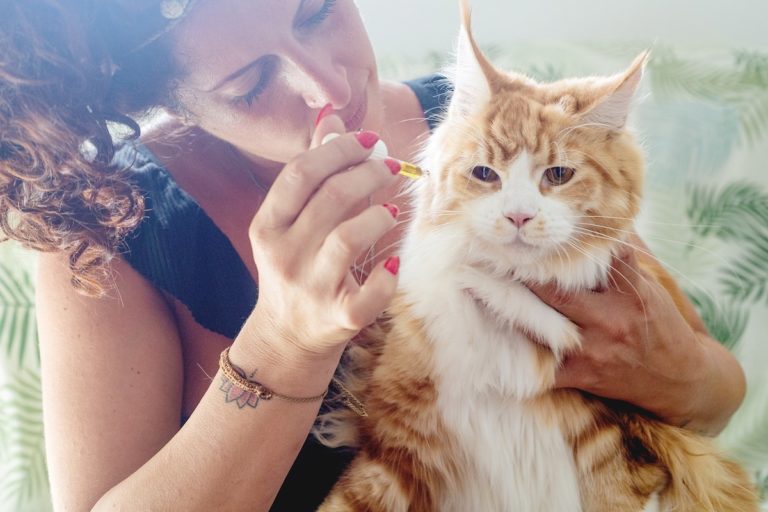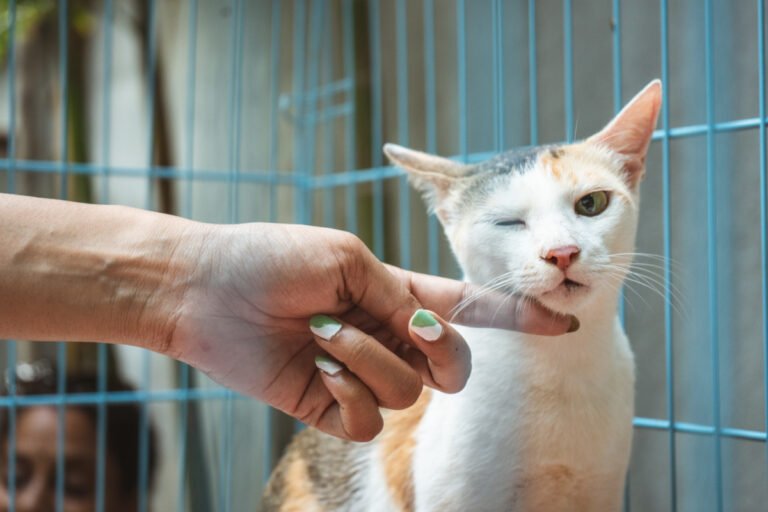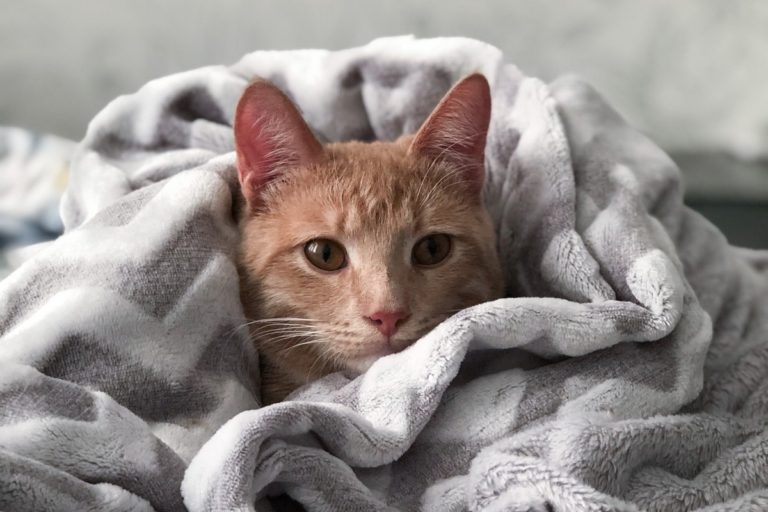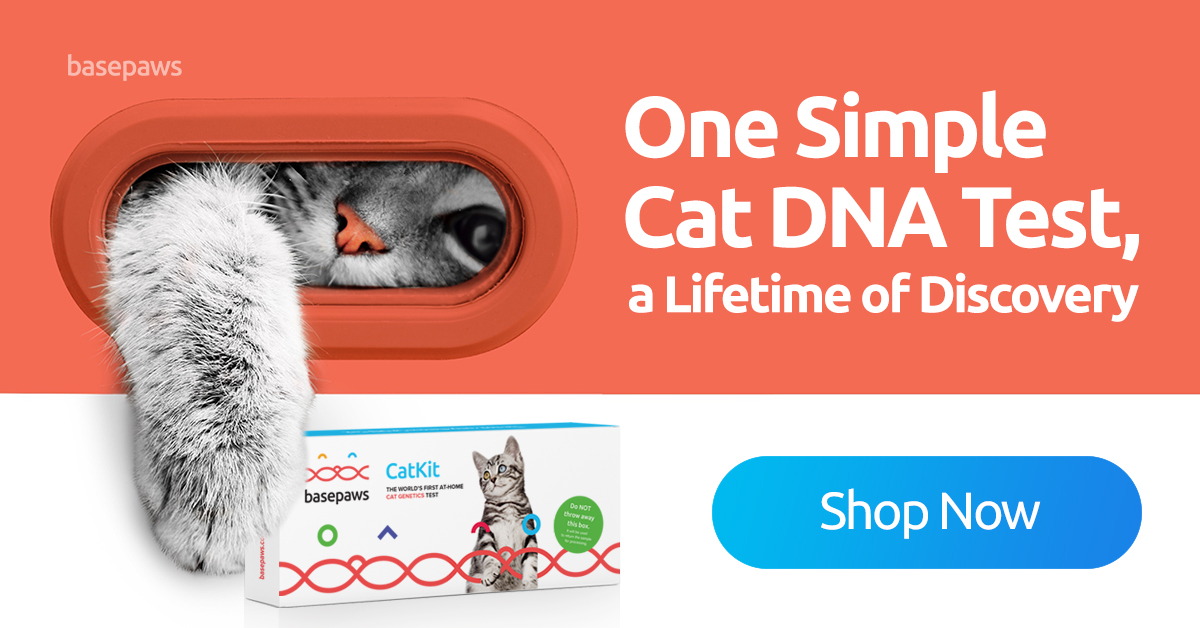The litter box can be a real source of trouble, for both cats and their guardians. Let’s go over the top 10 most common litter box problems, their causes and how to solve them.
DISCLAIMER: This post may contain affiliate links. If you click one of these links and decide to make a purchase, we may receive a small commission. This comes at no extra cost to you and helps to keep the site alive and up to date. If you want more information, please review our Privacy Policy. Thank you for your support!
1. Your cat doesn’t bury her feces
The Problem
One of the most common litter box problems is a cat that doesn’t cover up her feces with litter like a “normal” cat. She doesn’t stick her paws into the litter to dig and most likely treads around lightly when she is in the box. Every time you walk into the litter box area, there are turds staring you right in the face.
The Cause
If your cat isn’t burying her poop at all, she probably has a problem with sticking her paws into the litter. Either it hurts, she doesn’t like the texture, or it’s just too dirty for her.
Clumping litters have a tendency to stick to the coat of cats with longer hairs. After experiencing this once or twice, your kitty might think twice about digging around in it.
Other cats skip the burying if there isn’t enough litter in the pan.
The Solution
Try a different litter for your cat. Smaller pellets like those in a clay litter generally feel softer on your cat’s paws and might encourage her to start burying her feces. Clay litters have the added benefit of clumping together when your cat soils it. They form neat balls that are easy for you to scoop out.
Add at least 2 inches of litter to the litter box, so your kitty has enough to dig her paws into. If she’s still unwilling to do so, take her to the vet to have her paws checked out.
2. Your cat digs excessively
The Problem
The next of the most common litter box problems is the opposite of the previous one. Unlike the cat from the previous problem, your kitty actually won’t stop digging. Whether she has gone number two or not. Litter ends up spilling over the sides of the litter box and gets stuck in her fur. You’re afraid to touch her because of all the bacteria she might be carrying as a result of this behavior.
The Cause
A cat that won’t stop digging is desperate to get rid of a smell. That might be because there are predators around and your cat doesn’t want to be found out. Or the smell is just really, really bad.
In a multi-cat household feline tensions can rise to a point where one of your cats feels insecure and gets bullied by a more dominant sibling. Your anxious cat will go out of here way to avoid conflict, including obsessively burying her poop.
The Solution
Observe the cat relations in your house, if you have multiple cats. Do they all get along, or is one exerting dominance over the others? Try spacing out your litter boxes a bit more to give all of your cats an opportunity to claim one. Remember: you need as many litter boxes as you have cats, plus one. And keep them clean as much as you can.
If your cat is always digging to cover up extra stinky poops, you should take her to the vet. The first sign of digestive issues is soft, fragrant feces. Of course, this can happen from time to time with any cat. But regular bouts of diarrhea are definitely not a sign of good health.
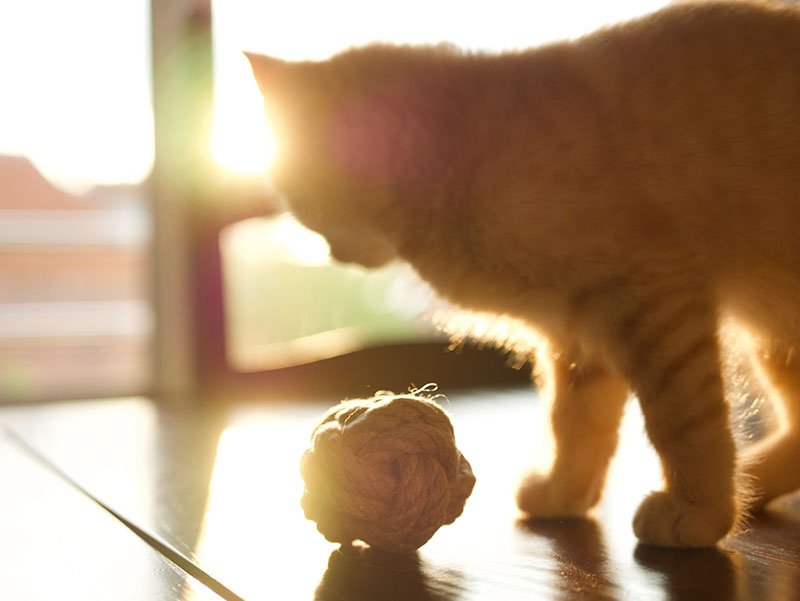
3. Your cat doesn’t use the litter box
The Problem
No matter how many litter boxes you put out, your cat refuses to use them. Instead, she prefers to go on all the things you don’t want soiled: the carpet, clothes, bedding, furniture, etc. You are starting to think she has it in for you. This is one of the most common litter box problems that cat owners struggle with.
The Cause
Your kitty is obviously trying to tell you that something is wrong. If your cat is completely avoiding the litter box area, it could be a matter of where you placed it. Others cats in your household may have taken ownership of the litter box area and are preventing her from getting near.
Another cause could be a physical problem. For instance, cats that have been unfortunately declawed often end up avoiding the litter box because the litter hurts their paws. Digestive issues can also cause your cat to prefer a soft texture to ease their discomfort or prevent her from getting into, or even reaching the litter box in time.
The Solution
Observe your cat’s behavior. Does she ever go near the litter box? If so, does she smell it and walk away or appear skittish at all? Does she try to get in but then give up? How do your other cats react? Does she seem uncomfortable or in pain when she goes?
Keep your litter box extra clean and perhaps try a different litter with better odor-control. Make sure the litter box is easily reachable and not too high for her to step into. Is your cat declawed? If you can’t narrow down the cause, or suspect anything might be physically wrong with your cat, take her to the vet for a check-up.
Related Post: Is Pet Insurance Worth It For Indoor Cats?
Is pet insurance worth it for indoor cats? Read this guide to learn about pet insurance for cats and calculate if it is really worth it for your indoor cat.4. Your cat goes just outside the litter box
The Problem
She aims, she shoots, she misses. Your cat makes the effort to go to the litter box area, but ends up doing her business just outside the box. It may happen only some of the time, or all of the time, but you routinely walk in to find a poop or a puddle next to the litter box.
The Cause
Since she does make the effort to go to the litter box, this tells you that the problem most likely has to do with the litter box area. Is she getting a bit older? She might be arthritic and not able to climb over the litter box’s edge. Is she declawed? Large litter pellets might be hurting her paws.
It could also be something as simple as you not cleaning it enough. Cats are clean creatures and generally don’t appreciate having to rummage around in their own feces.
If your cat has accidents only some of the time, she might be ingesting something she shouldn’t. Do you ever catch your kitty chewing on inedible things? Check the contents of her poop, because she might have swallowed some of it. Foreign materials can clog up your cat’s colon and cause her genuine discomfort.
The Solution
Keep your litter box area spotless by scooping up poops and urine as soon as you see it. Give the litter pans themselves a wash once every week.
Do you notice your cat trying to go into the litter box, but not following through? Get her a litter box with a low edge, or even a low front entry. Make sure nothing is blocking her way to the litter box either.
If your cat is consuming foreign materials, remove the source from her environment and ask your vet to do a blood test. Your cat might have this compulsion because of a dietary deficiency.
5. Your cat guards the litter box
The Problem
Another one of the most common litter box problems is cats being very possessive over the litter box. Your cat chases away other cats when they come near it, or stalks them when they try and use it. She might even become aggressive towards you when you go in to intervene.
The Cause
When a cat guards her litter box, it’s a sign that she is experiencing some serious frustration and territorial insecurity. It is usually brought on by a sudden change in the environment or a traumatic experience. Perhaps you introduced a new pet into the household and your cat is having trouble adjusting. Or maybe a rival cat has encroached on her territory, either inside or outside the house.
The Solution
The very first step in solving this type of behavior is to put out more litter boxes. This will hopefully give your other cats some relief. In general, you want to have as many litter boxes as you have cats, plus one. I would recommend choosing litter boxes without a cover, so your other cats won’t get trapped by your frustrated feline.
Next, you want to work on alleviating some of your cat’s stress. Get her a cat tree that she can claim her own. Provide scratchers she can leave her scent on. Build an agility course of shelves and tunnels that you can lead her through using a feather toy. If you cater to the powerful cat inside of her, she won’t feel the need to own her toilet area above all else.
6. Your cat plays in the litter box
The Problem
After going on the litter box your cat likes to come back and play with her feces or clumps of urine. She swats them around the pan or even tries to take them out. It all looks very cute and she seems to be enjoying herself, but she’s making a big, dirty mess. Of herself and the litter box area.
The Cause
Playing in the litter box is something we mostly see in kittens and young cats. At this age they are brimming with energy and will engage with pretty much anything that can be used as a toy. If there aren’t many cat friendly playthings in her environment, your cat may hone in on the ball-shaped clumps in the litter box.
The Solution
Offer better alternatives for play than what’s inside the litter box. Spread a few crumple balls, a puzzle feeder and maybe a toy mouse or two around the floor of your living space and let kitty explore. Or take a more hands on approach with a feather toy or a laser light. Poop her out with play, and she won’t play with poop. 😉
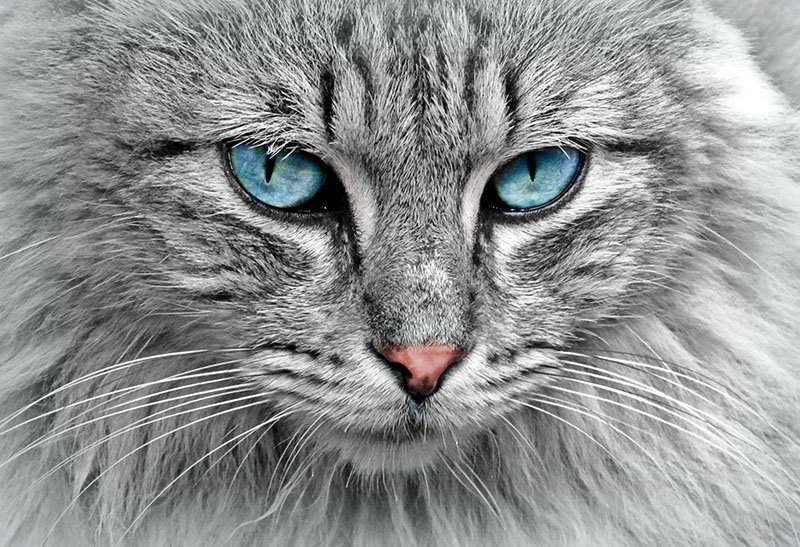
7. Litter tracks all over
The Problem
You are finding cat litter everywhere. In the kitchen, in the living room, on the floor, on the sofa, in your bed… Everywhere! It sticks to your cat’s paws, to your socks and your shoes. No matter how often you sweep, vacuum, or Swiffer, you keep finding bits of litter wherever you look.
The Cause
I hate to be the one to tell you this, but… *whispers* cat litter tracks. There is no going around it, to some degree at least. But don’t give up yet! Read on for some tips on how to limit tracking.
The Solution
Okay, now we know that all cat litter tracks. But there are some that track less than others. So for starters, you want to pick out a good, non-tracking cat litter. Once you have that, choose a compatible cat litter mat that covers your main litter box area. It should be big enough to fit under the litter box and cover a wide enough area around it so that your cat doesn’t jump over it.
Finally, consider getting a cover for your litter box. Less litter will spill over the side when your cat digs around in there. What’s on her paws will largely be captured and trapped by the litter mat.
8. Stinky feces
The Problem
You hear your cat rummaging around in the litter box. She walks away as if nothing happened. A few minutes later you are hit in the face with the worst smell you have ever smelled! And it lingers too! (Can you tell that I’m speaking from experience?)
The Cause
Normal, healthy cat poop doesn’t exude a very strong odor. If your cat’s excrements smell so badly that they seem to follow you around the house, her stomach is definitely upset in some way. Have you recently changed her diet? Did she eat something toxic? Or does this happen more often?
The Solution
If you’ve recently switched your cat to a new food, this could very well be the cause for her gastric issues. Mix the new food with some of her old food and see if she adjusts to it over a week or so. If not, try a different food.
In all other cases, and especially in the case of a suspected poisoning, it is best to take your cat to the vet. Chronic digestive issues can be a sign of an underlying condition like pancreatitis or hyperthyroidism. Your vet will, in most cases, run a blood test to determine what is wrong and may prescribe medication or a specialized diet.
9. You have an allergic reaction
The Problem
You are allergic, either to cats in general or to something litter box related. You might be aware of this allergy, or not. Either way, you are experiencing symptoms of an allergic reaction whenever you clean or are around your cat’s litter box. Sneezing, itching, swollen eyes or a swollen tongue are the first signs to look out for.
The Cause
The most common allergy that can be triggered by cat litter is a dust allergy. Clumping clay litters leave quite the cloud when you pour them out into the litter pan.
Organic materials, on the other hand, can be allergens in their own right. A growing demand in biodegradable cat litter has manufacturers getting very creative in their choices. Nowadays, you can get litters made of paper, wood, corn, grass, and more. If you are allergic to corn or suffer from hay fever, be careful when selecting an organic litter for your cats.
Another possible cause lies in the processing of the litter by the manufacturer. Chemicals are often added to help with clumping and odor-control. Organic litters can even contain pesticides to prevent bug infestations.
The Solution
Take care to read the ingredient list before buying a cat litter. Obviously you should avoid any ingredients that you are known to be allergic to.
However, usually not all ingredients will be listed. If you can’t narrow down the exact cause of your allergic reaction, your best option is to use the most basic litter you can find. One that has no added chemicals or weird materials. It might not clump as well and probably requires you to clean the litter box more often, but that’s a good idea for someone with allergies anyway.
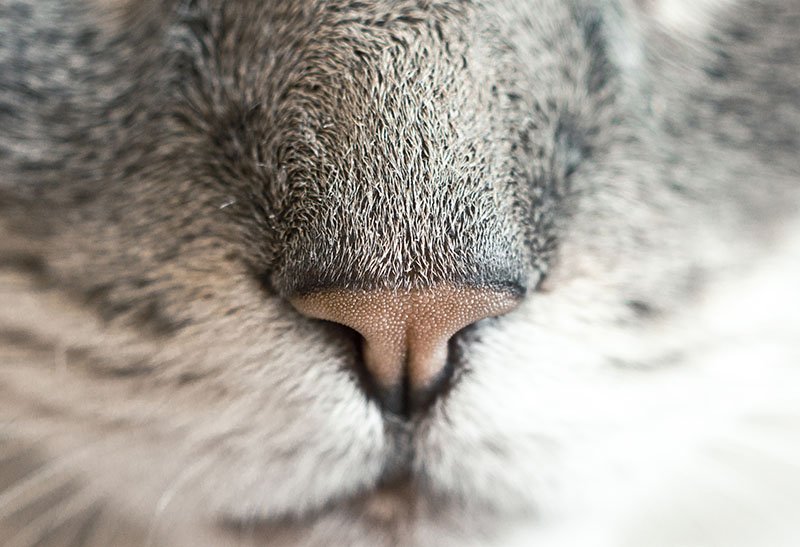
10. Your cat has an allergic reaction
The Problem
Your cat is showing signs of an allergic reaction, but you can’t find the source. No matter what food you try or how much you change their sleeping environment, the symptoms aren’t letting up. She might be scratching her face and neck, continuously licking her paws, suffering from hair loss, or even vomiting.
The Cause
Similar to humans, cat can be born with or develop allergies. And, in general, they can have the same allergies as us. In the case of cat litter, the most obvious culprits are corn and chemicals.
If your cat has a corn allergy, your problem is likely bigger than the litter box. Many commercial cat foods contain corn as a cheap filler ingredient.
Any chemicals that your litter has been treated with will end up on your cat’s paws and, ultimately, in her digestive system. All of these things might not trigger a reaction immediately. But over time the allergens will build up and start to really bother your cat.
The Solution
Remove the litter from your house. Look for a new, inorganic litter without added chemicals.
In the meantime, take your cat to the vet for a check-up. I recommend also getting her blood tested to rule out any lasting damage from her exposure to the litter. You can take the packaging or ingredient list with you. Perhaps your vet can spot the offending substance.
Final Thoughts
We all love our cats and want what’s best for them. Nevertheless, we often tend to overlook their specific litter box needs and end up with dirty floors because of it. Taking a minute, or a few weeks even, to assess the situation and make some minor adjustments can mean the difference between a happy cat home and a smelly one.
Now you are aware of the 10 most common litter box problems, you have everything you need to get a grip on your cat’s litter box habits and make the situation work for her.





